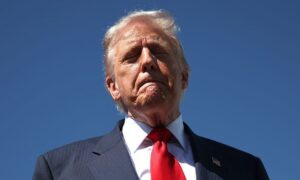The Gold wax and Greenback wane: new currency diversification

Ray Dalio, founder of Bridgewater Associates, recently published a post on social media X titled My Answers to Your Questions About Gold, stating that “gold is beginning to replace U.S. Treasuries as a risk-free asset.”
Coincidentally, JPMorgan analysts maintained their bullish outlook on gold on Thursday, predicting prices will rise to an average of $5,055 an ounce by the fourth quarter of 2026, up about 15% from Monday’s record high of $4,381.
The bank pointed out in the report that this forecast is based on the assumption that global investors and central banks’ quarterly gold purchasing demand will remain at around 566 tons in 2026, becoming the core driving force for pushing up gold prices. And recently, the proportion of gold in global central bank reserve assets has increased rapidly, while the share of the US dollar has declined.
Gold as the new risk-free asset
Data speaks for itself. The trend of accelerating diversification of global reserve assets has been further confirmed. A recent Deutsche Bank report indicates that, taking into account current spot gold prices, the proportion of gold reserves in total central bank foreign exchange and gold reserves has rapidly increased from 24% at the end of June this year to 30% today, while in the same period, the US dollar’s share has fallen from 43% to 40%. This suggests that gold’s appeal as a reserve asset is growing, while the dollar’s dominance is weakening. The report also states that if the gold price rises to $5,790 per ounce, assuming current holdings remain unchanged, its share will equal that of the US dollar.
Gold rises to 30% of global FX + gold reserve holdings [Deutsche Bank]
Combining the gold purchasing intentions reported by central banks and the expectations of global reserve managers, their willingness to increase gold reserves has increased, which is in line with the key drivers of the gold bull market this year.
According to statistics from the World Gold Council, benefiting from the continuous gold purchases by central banks in recent years and the record highs in international gold prices, as of the end of the second quarter of this year, the global official gold reserves (excluding the International Monetary Fund and the Bank for International Settlements) comparable to the global official foreign exchange reserves were worth $386.42 billion, slightly exceeding for the first time the official foreign holdings of US Treasury bonds balance of $381.91 billion as measured by the US Treasury’s International Capital Flows Report (TIC).
“History shows us that the biggest risk is that debt assets like U.S. Treasuries will either be defaulted on or devalued, more likely devalued. History has also shown that gold is a money and store-hold of wealth that has intrinsic value, so it doesn’t depend on anyone giving the holder of it anything other than the gold itself,” Dalio stated.
The evolution of global reserve asset diversification
Why is gold returning to the core?
The core motivation lies in the dual drive of safe-haven demand and ‘de-dollarization’. Currently, the US dollar credit system is facing structural pressure, and many central banks are seeking to diversify their reserve asset portfolios to reduce their dependence on a single currency.
According to the latest data on the currency composition of global foreign exchange reserves (COFER) disclosed by the International Monetary Fund (IMF), as of the end of the second quarter of this year, the proportion of the US dollar in the global foreign exchange reserves with disclosed currency composition fell from 57.79% at the end of the previous quarter to 56.32%, a drop of 1.47 percentage points. Its reserve share has been below 60% for 11 consecutive quarters, further hitting a new low in 30 years.
Gregory Shearer, head of base and precious metals strategy at JPMorgan, added that the momentum behind gold prices comes from the Fed’s rate-cutting cycle coupled with stagflation concerns, questions about the Fed’s independence, and broader demand for hedging against currency devaluation.
The pessimistic long-term outlook for the US dollar
In the first half of this year, the US dollar index fell by more than 10%, the largest drop since 1973. Although the index has rebounded slightly recently, the industry is not optimistic about the long-term prospects of the US dollar against the backdrop of the Fed’s continued release of interest rate cuts and the record US fiscal deficit.
Although the US dollar index has shown some resilience recently, its gains are still limited. Obviously, investors are considering two major factors: the risk of a US government shutdown and the growing expectations of a Federal Reserve interest rate cut later this year.
The Congressional Budget Office previously estimated that the last 2018-2019 government shutdown reduced GDP by $11 billion, a figure that highlights the potential economic consequences of prolonged political deadlock.
In traditional crises, the dollar strengthens due to its safe-haven properties. However, this shutdown itself is an internal crisis caused by the failure of US politics, which will naturally greatly weaken its safe-haven properties.
Recent data also reveals that the US’s “twin deficits” and high inflation remain persistent. The dollar’s sovereign creditworthiness, store of value, and trading, clearing, and pricing have all been impacted to varying degrees, with increasing signs of a marginal weakening of its safe-haven function. Furthermore, with the US imposing tariffs on major countries globally, the supply and network effects of the dollar may weaken, increasing the demand for non-US countries to settle trade in their own currencies. Amidst these weakening supply and demand for the dollar, non-US economies may be less willing to hold dollar reserves, potentially leading to a decline in the dollar’s share of global foreign exchange reserves and an increase in the share of non-US currencies.
Muhammad Zamir Assadi



























